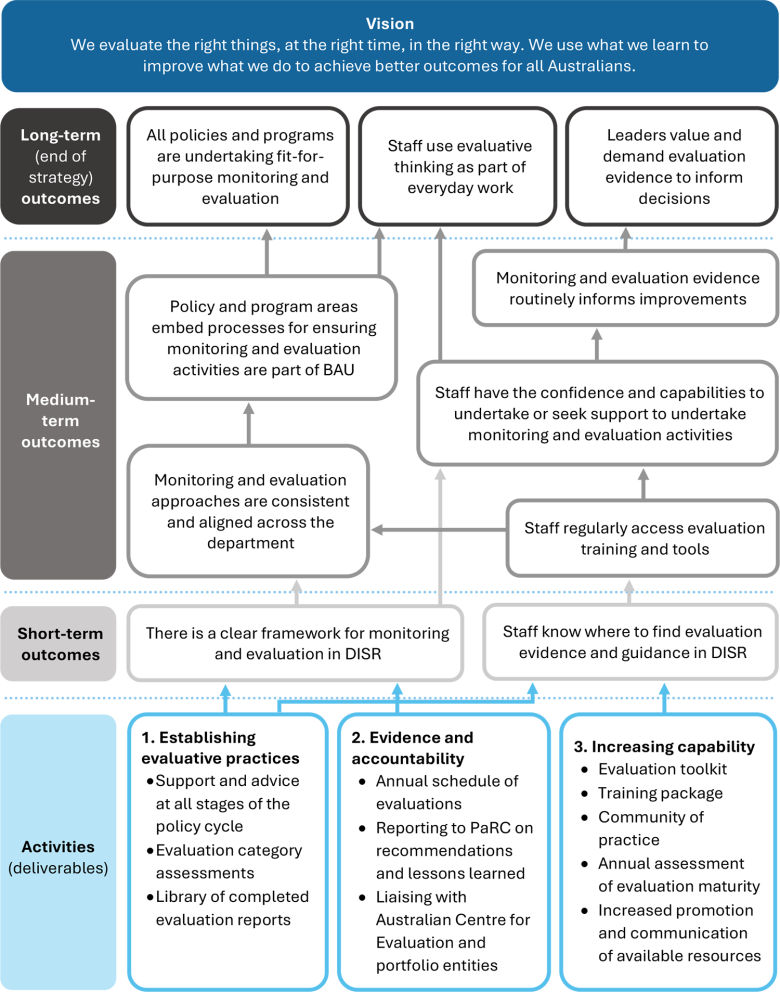This strategy is grounded in an overarching theory of change. It explains how implementing the strategy and its deliverables is expected to lead to change in the department over time. This theory of change is illustrated by the following program logic.
The Australian Government is now operating in line with Caretaker Conventions, pending the outcome of the 2025 federal election.

